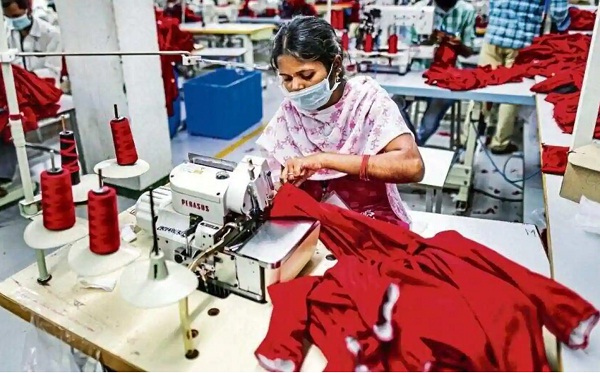
Apparel store sales from January to November in the US were 7 per cent higher compared to the same period in 2021 however, but due to high inflation, volume growth was limited. At the same time home furnishings store sales are witnessing stagnancy and have seen muted growth of only 1 per cent in the same period, says Wazir Advisor’s November report ‘Apparel Trade Scenario in Key Global Markets and India’ focusing on apparel consumption and import data of the US, EU and Japan and exports stats for India shows.
With lower base value apparel store sales in the UK from Jan to Nov were 21 per cent higher than 2021, as demand in 2021 did not recover to pre-covid levels. Same holds true for apparel imports data from Jan to Aug, which is 19 per cent higher than last year, but the base (2021 data) is quite low. For EU, apparel imports from Jan to Oct have grown 41 per cent over the same period last year, again a reasonable explanation is the lower base value from the same period in 2021. In Japan’s case, apparel imports from Jan to Sep have grown merely 5 per cent in 2022 compared with the values in the same period last year.
For India however, the good news is apparel exports have started to recover from the decline in last quarter. The export value in Nov 2022 is 9 per cent higher than in the same period last year.
Key highlights of US market
Nov 2022, US monthly apparel store sales are estimated to be $18.7 bn which is 7 per cent less than Nov 2021. On YTD basis, the sales are 7 per cent higher than in 2021. Apparel inflation has remained in the range 5.5 to 8 per cent during 2022, indicating nil to negative volume growth, the report shows. In Q3 2022, online sales of clothing and accessories registered a growth of 9 per cent over Q2 2021 but it was marginally lower than Q2 2022 sales.
Store sales of home furnishing in Nov 2022, were estimated at $5.6 bn, an 8 per cent drop compared to Nov 2021 sales. On YTD basis the sales are only 1 per cent higher than 2021.
US Consumer Confidence Index declined to 100.2 from in Nov compared to 102.2 in Oct 2022. The index is on a constant decline for several months considering high inflation and recession.
Apparel import in Oct 2022 was $8.2 bn which is 1 per cent less than in Oct 2021. On YTD basis, the imports are 30 per cent higher than in 2021. China’s share in the US market has dropped 8 per cent since 2019, comparatively Vietnam and Bangladesh’s shares grown 2 and 3 per cent respectively. India on the other hand has seen its share rise merely 1 per cent since 2019.
China, Bangladesh market share increase in UK, EU
In Nov 2022, UK’s monthly apparel store sales were £4.1 bn, 3 per cent higher than in Nov 2021. On YTD basis, the sales are 21 per cent higher than 2021. High growth is mainly on account of low base value. Apparel imports in August 2022 were around 15 per cent higher compared to Aug 2021. On YTD basis, imports in 2022 are 19 per cent higher than 2021 but still below 2019 values.
In terms of market share in the UK, China, Bangladesh and Turkey have seen a growth by 5, 4 and 3 per cent respectively, since 2019.
EU apparel imports in Oct 2022 were 32 per cent higher compared to in Oct 2021. On YTD basis, imports in 2022 are 41 per cent higher than 2021. The high growth is mainly because of high price inflation and low base value. Country wise market share of China has increased 1 per cent whereas Bangladesh’s share has increased by 3 per cent since 2019.
In Japan also China’s share fall
Japanese apparel imports have been on the rise as well. Import figures in Sep 2022 was $2.7 bn a good 7 per cent higher than Sep 2021. On YTD basis, imports in 2022 are 5 per cent higher than last year.
The country’s apparel imports from Bangladesh’s and Cambodia’s increased 1 per cent each, however China’s share declined 1 per cent compared to 2019.
India’s apparel exports revive in Nov
India’s Nov 2022 apparel export was 9 per cent higher than in Nov 2021. On YTD basis exports are 10 per cent higher than in 2021 but considering high
inflation level, there is nil to minimal volume growth over 2019. Country wise, US’ share increased 8 per cent, whereas UAE’s and UK’s share declined 3 and 1 per cent, respectively since 2019.












